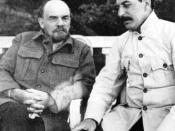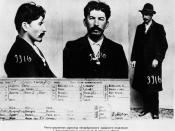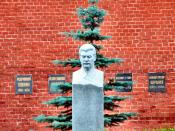Collectivisation was Stalin's answer to his belief that Russia's agriculture was in a terrible state. Stalin believed that Russia had to be able to feed itself - hence collectivisation - and that at the very least the peasant farmers should be providing food for the workers in the factories if the Five Year Plans were going to succeed. There was barely any mechanisation, the use of scientific measures was minimal and peasant farmers produced usually for themselves and the local area. This was not good enough for Stalin.
To change all this and update Russia's agriculture, Stalin introduced collectivisation. This meant that small farms would be gathered together to form one large massive one. These bigger farms would be called collectives. As they were large, there was every reason to use machinery on them. The more food that could be grown the better as the cities and factories could suitably be fed.
Hungry factory workers would not be in a fit enough state to work effectively.
However, many richer peasants, 'kulaks', were against collectivisation. The land that Lenin had given them was now being taken away by Stalin. Villages that refused to join a collective had soldiers sent to them and the villagers were usually shoot as "enemies of the revolution" or "enemies of the people". The land, now freed from ownership, was handed to the nearest collective farm.
Those villages that were due for collectivisation but did not want to join a collective, killed their animals and destroyed their grain so that they could not be taken by the soldiers and secret police. Thus began an era of almost unparalleled slaughter of farm animals and the systematic destruction of grain.
The 10% reduction in grain collected was a significant decline. The secret police took to confiscating what they...


